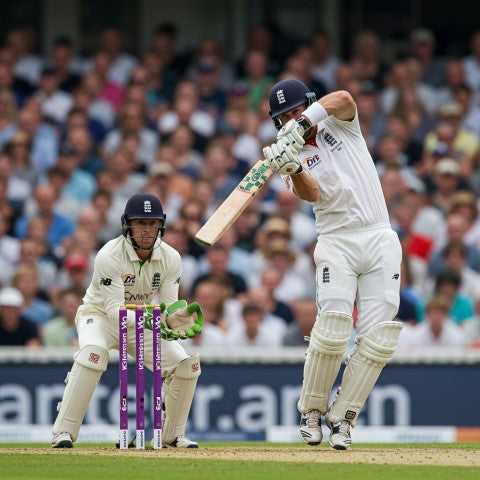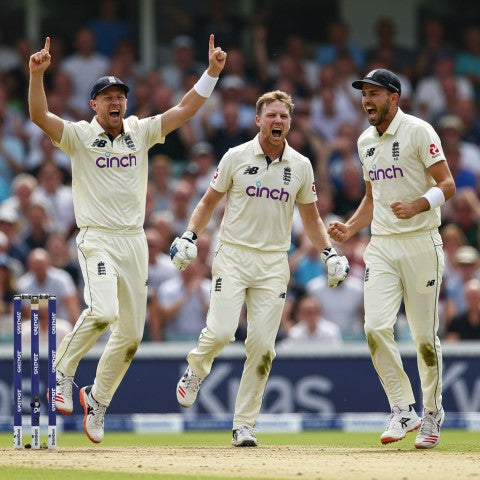IPL 2025 Rules and Regulations: What’s Changing and Why It Matters

Over the years, the Indian Premier League (IPL) has evolved from a mere T20 competition to a spectacular global event. It blends explosive cricket, celebrity glamour, and fan frenzy, capturing the imagination of millions. Yet, this tournament never stands still; it thrives on fresh ideas and regular adjustments to keep pace with the sport’s dynamic nature.
In 2025, the Board of Control for Cricket in India (BCCI) has introduced several significant tweaks to boost fairness and entertainment. These rules sharpen the focus on team strategies, while others address external conditions that can tilt a match. These changes have already sparked debates among fans, players, and experts alike.
Here are the updated IPL 2025 rules and regulations, which include stricter off-field rules and higher player retention limits. Taken together, they shape the IPL’s latest identity and hint at how the future of T20 cricket might unfold.
1. Teams Can Now Retain Up to Six Players
A pivotal shift this year is the expansion of player retention. Franchises may now keep up to six players—more than ever before. This combination of direct retentions and Right to Match (RTM) cards offers fresh flexibility.
In seasons past, holding on to star names demanded tough budget choices. Today, squads can craft a core unit more effectively, maintaining star power while experimenting with emerging talents. For instance, teams like Mumbai and Chennai, known for stability, can preserve their tried-and-tested nucleus while retaining vital new signings.
The ripple effect extends to auctions, where other teams face the challenge of finding top performers who are suddenly less likely to be released. As fan favourites stay put, spectator loyalty intensifies. At the same time, the race to unearth hidden gems at the auction becomes fiercer than ever.
2. Impact Player Rule Continues to Shape Matches
Carried over from 2023, the Impact Player Rule allows one strategic substitution per team, before the 15th over of either innings. This concept revolutionises each captain’s approach, blending real-time tactics with split-second decision-making.
Imagine a struggling bowling unit suddenly strengthened by a specialist strike bowler, or a faltering chase revived by a powerful finisher swapped in. The mid-game switch can alter momentum within a few deliveries. Critics initially feared it would undermine a balanced contest. Yet fans adore the drama of a calculated swap that can salvage a near-lost game.
Captains who master this rule gain an upper hand. In 2025, we’ve already seen last-minute rescues and game-changing breakthroughs. Above all, the Impact Player regulation exemplifies the IPL’s commitment to innovation without diluting cricket’s competitive essence.
3. Saliva Ban Finally Lifted
The saliva ban, introduced amid the COVID-19 crisis, is no more. Bowlers and fielders can once again shine the ball using traditional methods. This reinstatement delights fast bowlers craving lateral movement, but also demands renewed vigilance from umpires to ensure fair practice.
During the ban, pacers relied on sweat and cloth to polish the ball. Many felt that reverse swing and conventional swing took a hit, particularly in humid or dry conditions. With saliva’s return, skilled seamers can exploit subtle movements, especially under lights or on worn tracks.
Some experts worry about potential overuse or unsanctioned alterations. However, most players welcome it as a nod to cricket’s heritage. By restoring this age-old technique, the IPL acknowledges the art of swing, adding fresh intrigue to powerplay battles and death-overs showdowns.
4. Ball Change Allowed to Tackle Dew
Anyone who’s watched an IPL evening match knows how dew can transform the second innings. To combat the slippery ball and wet outfield, the team bowling second may now request one ball change between overs 11 and 20.
This rule seeks to restore parity if excessive moisture hampers grip. Before 2025, sides resorted to sawdust and extra towels, but dew often tilted matches in favour of the chasing team. With an official mid-innings switch, spinners regain their bite, and pacers can maintain consistent lines without fear of erratic swing.
Players and coaches appreciate the fairness this offers, although critics wonder if frequent ball changes disrupt the game’s natural flow. Nonetheless, most welcome any measure that ensures more even contests, especially in venues notorious for heavy nighttime dew.
5. ICC Code of Conduct Now Applies to IPL
In a decisive move, the IPL has fully integrated the ICC Code of Conduct into its framework. Once governed by a hybrid disciplinary system, the league now adopts the global standard for player behaviour, unifying cricket’s ethical benchmarks.
Under this shift, indiscretions such as on-field arguments, dissent, and excessive appealing face clearly defined penalties. Demerit points also carry over to international fixtures, ensuring players keep their emotions in check. While some worry this clamps down on the heated passion that defines the IPL, consistency benefits teams, umpires, and viewers alike.
By aligning with international norms, the IPL underscores its position as a top-tier competition. Ultimately, higher standards of conduct can strengthen cricket’s image, reminding fans that even in the most intense battles, respect for the sport must remain paramount.
6. BCCI Tightens Off-Field Protocols
To limit distractions, the BCCI has stiffened off-field guidelines. Two major directives stand out: only designated personnel may enter the team dressing rooms, and players must travel exclusively via official transport, with no private vehicles permitted.
The idea is to minimise external influences that can disturb a player’s focus. By restricting family and friends from sensitive team areas, management fosters a more professional, unified environment. Mandating shared bus travel encourages squad bonding while streamlining security and logistics.
Not everyone is on board. Some argue these measures are too rigid, especially for star players juggling media and personal commitments. Yet, coaches largely support the changes, believing that stricter discipline can strengthen mental preparedness. Over a gruelling schedule, such unity often proves vital in close encounters.
7. Practice Sessions Face New Restrictions
In a bid to preserve pitch conditions and maintain fairness, the IPL has imposed fresh constraints on match-day preparations. Teams cannot use the main pitch for nets on game day, and their practice time in adjacent net areas is strictly monitored.
Previously, open nets risked wearing down the playing surface, causing inconsistent bounce and abrupt deterioration. Now, each franchise must schedule net sessions well in advance, rotating bowlers and batters to avoid excessive strain on limited facilities.
While some players miss the immediacy of last-minute fine-tuning, groundsmen praise the regulation for enhancing pitch quality across multiple back-to-back fixtures. A stable track offers a more authentic contest, ensuring bowlers get legitimate bounce and batters can trust the ball’s movement. In theory, the new protocol should lead to fairer, more skill-centric showdowns.
8. Streaming Moves to a Hybrid Model
Media partnerships have always boosted the IPL’s global reach. This year, a Reliance-Disney collaboration unveils a hybrid streaming service. It splits free and paid content, balancing mass accessibility with monetisation.
Free streams still provide core coverage, enabling casual fans to follow matches without cost. However, premium features—like alternate camera angles, deep-dive stats, and extended highlights—sit behind a subscription paywall. Some fear this might alienate fans used to free offerings, yet the enhanced experience appeals to die-hards seeking deeper engagement.
Early responses suggest a potential blueprint for future sports broadcasting. Revenue from premium memberships could support technological upgrades, while free streaming maintains broad popularity. The IPL’s willingness to experiment reflects its pioneering spirit, proving yet again that a successful league must adapt to shifting digital trends.
9. Auction Highlights: Youth and Mega Deals
Auctions have always been IPL showstoppers, and 2025 was no different. The biggest buzz surrounded 13-year-old batting prodigy Vaibhav Suryavanshi, signed by the Rajasthan Royals. Some critics worry that promoting such a young talent risks undue pressure. Nevertheless, franchises increasingly seek to invest early in future stars.
Meanwhile, established names commanded jaw-dropping sums. Rishabh Pant, in particular, secured a record-breaking contract. Overseas pace bowlers also fetched hefty bids, reflecting a renewed appetite for strike weapons capable of dismantling top orders in the powerplay.
Ultimately, this year’s auction emphasised the league’s dual nature: forging local heroes while showcasing global icons. Fans crave flamboyant finishing and incisive bowling, and franchises are prepared to pay top dollar to deliver both. As a result, the new season promises flair, drama, and fast-evolving storylines.
10. Overall Impact on the Game
Collectively, these updates mirror the IPL’s hunger for innovation and balance. More retention slots strengthen fan loyalty and let teams nurture a stable core. The Impact Player rule extends the strategic canvas, allowing captains to plug gaps or exploit opponent weaknesses on the fly.
By lifting the saliva ban, bowlers regain a classic weapon. Meanwhile, the option to change the ball mid-innings mitigates the evening dew factor, ensuring closer contests. Adopting the ICC Code of Conduct imposes discipline, aligning the tournament with international standards. Off-field protocols foster unity, while restricted practice sessions protect the integrity of pitches.
In parallel, the hybrid streaming model widens revenue streams, even as auctions continue to produce sensational headlines. Blending tradition with forward-thinking policy, IPL 2025 is shaping cricket’s short-format future—on and off the field.
Comprehensive Table of the New IPL 2025 Rules
| Rule/Change | Key Points | Potential Impact |
|---|---|---|
| 1. Six Player Retention | Increased retentions and RTMs | Stable team cores, heightened auction stakes |
| 2. Impact Player Rule | One mid-match substitution before 15 overs | Tactical flexibility, last-minute game turnarounds |
| 3. Saliva Ban Lifted | Traditional ball-shining method reinstated | Enhanced swing for bowlers, potential oversight needed |
| 4. Optional Ball Change (Overs 11–20) | Dew-affected second innings can swap ball | More balanced contests, especially in damp conditions |
| 5. ICC Code of Conduct Adoption | Uniform disciplinary framework for all players | Clearer penalties, global consistency in player behaviour |
| 6. Stricter Off-Field Protocols | Dressing room restrictions, mandatory team transport | Improved focus, stronger squad unity |
| 7. Restricted Match-Day Practice | Limited use of main pitch, regulated net sessions | Preservation of pitch quality, reduced last-minute tweaks |
| 8. Hybrid Streaming Model | Free basic coverage plus premium paid features | Wider digital reach, additional revenue streams |
| 9. Auction Youth Investments & Mega Deals | Early signings of underage prodigies, record-breaking contracts | Long-term talent planning, high-profile acquisitions |
| 10. Overall Competitive Balance & Innovation | Combined effect of all new rules and policies | More enthralling cricket, elevated viewer engagement |
Conclusion: IPL 2025—Cricket’s Future in Motion
The IPL has always danced between tradition and innovation, and 2025 is no exception. From expanded retentions that let franchises shape enduring squads, to dynamic mid-game substitutions, every rule seeks to enrich the spectacle. The league’s adoption of the ICC Code of Conduct elevates it to an even higher standard, reinforcing respect and unity in an intense environment.
By addressing issues like dew and ensuring fair ball maintenance, the IPL acknowledges the fine margins that separate triumph from defeat. Off-field protocols may appear strict, but many coaches see them as vital steps toward team synergy. Meanwhile, hybrid streaming marries commerce with inclusivity, letting more fans share in the excitement.
As other T20 competitions look to the IPL for inspiration, these reforms could spark global changes. Even so, the essence of cricket remains: skill, spirit, and a quest for glory in every over.





Leave a comment